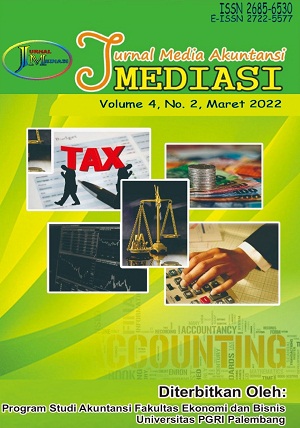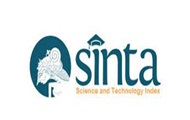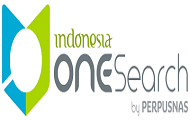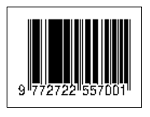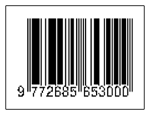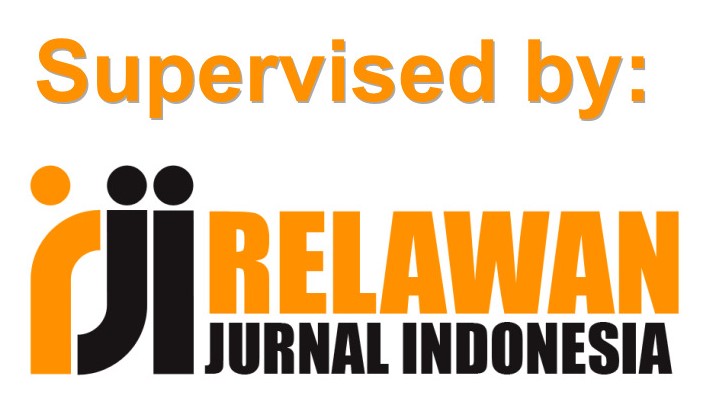Pengaruh Penerimaan Pajak Air Permukaan Terhadap Pendapatan Asli Daerah Pada Badan Pendapatan Daerah Provinsi Sumatera Selatan
DOI:
https://doi.org/10.31851/jmediasi.v4i2.7866Abstract
ABSTRACT
Â
This study aims to determine the effect of PAP acceptance on PAD. At the BAPENDA Company of South Sumatra Province with a research observation period of 2016 -2020. The population of this study is the report on receipts of PAP and PAD at BAPENDA of South Sumatra Province from 2016-2020. The research sample uses monthly data on reports of PAP and PAD receipts for the period 2016-2020. The data used in this study is technical secondary data. The data analysis used is simple linear regression, with the help of SPSS 21 for windows. The results of this study indicate that the PAP variable with a significance value of 0.000 > 0.05 has an effect on PAP. For the value of the level (R2) of 0.935, it has a very strong relationship between the independent variable and the dependent variable. Based on the discussion, the conclusion of this study is that if the surface water tax revenue increases, the local revenue will increase. If PAP receipts decrease, PAD decreases. It is recommended that the local government further enhance the socialization of PAP collection in order to increase the acceptance of PAP in all districts and cities in South Sumatra. Provide convenient and efficient tax payment services for local governments, especially districts/cities, and enable taxpayers to comply with their taxes.
Â
Keywords:Surface Water Tax, Local Revenue
Â
Â
ABSTRAK
Â
Penelitian ini bertujuan untuk mengetahui Pengaruh Penerimaan PAP terhadap PAD. PadaBAPENDA Provinsi Sumatera Selatan dengan periode pengamatan penelitian tahun 2016 -2020. Populasi riset ini adalah laporan penerimaan PAP dan PAD pada BAPENDA Provinsi Sumatera Selatan dari tahun 2016-2020, Sampel penelitian menggunakan data bulanan laporan penerimaan PAP dan PAD periode tahun 2016-2020. Data yang digunakan dalam penelitian ini adalah data sekunder teknis analisis data yang digunakan adalah regresi linier sederhana, dengan bantuan SPSS 21 for windows. Hasil dari penelitian ini menunjukkan bahwa variabel PAP dengan nilai Sigsi0,000 > 0,05 berpengaruh terhadap PAP. Untuk nilai besarnya tingkatan (R2) sebesar 0,935 mempunyai hubungan yang kuat sekali antara variabel independen terhadap variabel dependen. Berdasarkan pembahasan maka, kesimpulan dari penelitian ini adalah jika penerimaan pajak air permukaan bertambah, maka pendapatan asli daerah meningkat. Jika penerimaan PAP berkurang, maka PAD menurun. Disarankan agar pemerintah daerah lebih meningkatkan sosialisasi pemungutan PAP dalam rangka meningkatkan penerimaan PAP seluruh kabupaten dan kota di sumatera selatan. Memberikan pelayanan pembayaran pajak yang nyaman dan efisiensi bagi pemerintah daerah, khususnya kabupaten/kota, dan memungkinkan wajib pajak untuk mematuhi pajaknya.
Â
Kata Kunci : Pajak Air Permukaan, Pendapatan Asli DaerahReferences
Augustine, Y., & Robert, K. (2013). Metodologi Penelitian Bisnis dan Akuntansi. Jakarta: Dian Rakyat.
Mardiasmo. (2016). Perpajakan. Yogyakarta: Andi.
Priyatno, D. (2014). SPSS 22. Jakarta: Andi Offset.
Samudra, A. (2015). Perpajakan Indonesia Keuangan, Pajak dan Retribusi Daerah. Jakarta: Rajawali Pers.
Sudana, M.I & Setianto, H.R. (2018). Metodologi Penelitian Bisnis dan Analisis Data dengan SPSS. Jakarta: Erlangga
Suhayati, E. (2011). Pengaruh Penerimaan Pajak Pengambilan dan Pemanfaatan Air Bawah Tanah (Abt) Serta Air Permukaan (Aper) Dalam Meningkatkan Pendapatan Asli Daerah Pada Dinas Pendapatan dan Pengelolaan Keuangan (Dppk) Kabupaten Bandung. Jurnal Ekonomi, Keuangan, Perbankan dan Akuntansi, 3(2), 303-330.
Sujarweni. W. (2014). SPSS untuk Penelitian. Yogyakarta: Pustaka Baru Press
Undang-Undang Republik Indonesia Nomor 28 Tahun 2009 Tentang Pajak Daerah dan Retribusi Daerah.
Undang-Undang Republik Indonesia Nomor 33 Tahun 2004 Tentang Pendapatan Asli Daerah.
Downloads
Published
Issue
Section
License
The copyright of the received article shall be assigned to the publisher of the journal licensed under a Creative Commons Attribution-NonCommercial 4.0 International License in line with the license, authors and any users (readers and other researchers) are allowed to share and adapt the material only for non-commercial purposes. In addition, the material must be given appropriate credit, provided with a link to the license, and indicated if changes were made. If authors remix, transform or build upon the material, authors must distribute their contributions under the same license as the original.

